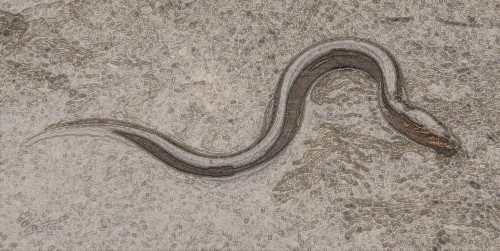 Old habits die hard. This was found to be true after forest department officials in Karnataka found at least 80 snares in the protected forest covers of Bandipur and Nagarhole national parks in the last 3 months. It seems that poachers of the area have shunned firearms and started re-using the traditional snares and traps to injure and kill tigers.
Old habits die hard. This was found to be true after forest department officials in Karnataka found at least 80 snares in the protected forest covers of Bandipur and Nagarhole national parks in the last 3 months. It seems that poachers of the area have shunned firearms and started re-using the traditional snares and traps to injure and kill tigers.
Anti-poaching drives in most forests of India and the world are now focusing on poachers that work like an organization, are heavily armed and carry the latest technological tools and ammuniations to track and kill animals. But the latest find shows that the traditional methods are all not forgotten.
Going by the high number of snares, the forest officials found in the dense Western Ghat forests, the department has now manipulated its plan of action and is now hunting for traps and snares laid out by poachers in the region.
Says Jose Louies, programme manager with the Wildlife Trust of India (WTI), “It is a significant poaching prevention plan, as the morning strolls carried out as part of this project also deters poachers.”
The forest department is being assisted in this endeavour by WTI, with support from the Care for the Wild International. The enforcement-related intelligence gathering is being done by a network of WTI informers. Voice for Wildlife, a Mysore-based group of lawyers, is also providing assistance to the state forest department.
Why use Snares?
The reason for going back to the use of snares, says Jose, might be that the snares do their work silently and do not attract as much attention as a firearm. The snares are also easy to make and hide. They continue to lie in the forest cover and all the poacher needs to do is check for any animal caught at regular intervals. The investment on these devices is also negligible as compared to costly guns, and their paraphernalia.
Sudheer K Shankar, lawyer and co-founder of Voice for Wildlife, says, “Earlier, snares and traps were primarily used for bushment (like pork). If an animal like a tiger or a leopard was caught, that would be a bonus. The trend, however, has changed considerably. In recent years, there have been many reports of big carnivores like tigers and leopards being caught by these devices.”
Another important reason of using these devices is that snares do not destroy the skin of the dead animal. In foreign markets where buyers are looking for tiger or leopard skin, they prefer those skin that are least distorted by a gun mark or any other sign of violence. Ironically, the poachers ensure a beautiful skin by subjecting the animal to the cruelst and slowest death. Caught in a snare an animal may slowly perish in pain as it remains stuck to a metal piece. It cannot move, cannot drink, cannot feed and has an open wound to take care of.
Deathly Traps
From the conservationist point of view, the snares are a much more dangerous equipment in the hands of the poachers than a gun. The snares can not only kill an animal but lead to severe injuries and amputations of its limbs.
For an animal like a tiger it is a deathly blow to be injured like that. Being a predator, its chances of hunting become close to nil and it may slowly starve to death apart from the constant irritation it is subjected to due to the injury.
Although the problem is persistent in each and every jungle of India, the Karnataka forest department is perhaps the first to recognise the issue and come out with an action plan to overcome the problem.
“I am glad that the threat is being taken seriously by the forest department. Instead of catching the culprits, this programme is a preventive practice,” says Shankar.
The department is carrying out ‘snare walks’ by the Special Tiger Protection Force (a unit within forest department) members along with WTI staff, under the supervision of the park manager / director. Every snare recovered is GPS-tagged on a map and handed over to the range officer.
The National Tiger Conservation Authority (NTCA), is also taking the news seriously.
The organisation has found that there are atleast 10 state in India where wandering gangs are on the lookout for tigers.
“The situation is serious and calls for urgent action to step up protection in tiger reserves,” said an advisory issued by NTCA member secretary Rajesh Gopal.
The field directors of 41 tiger reserves in India had been instructed to deploy special anti-poaching squads to patrol the reserves and look for snares and traps. They have been instructed to complete the exercise within a fortnight.
The NTCA has also said that forest guards should keep a track of tigers and their cubs, straying out of the tiger reserves as they could fall prey to poachers. Another location to keep vigil are the water-bodies, which tigers frequent.
The authority had also received intelligence reports that many gangs had visited villages around tiger reserves in the recent past to examine the possibility of killing a tiger. As many as 29 tiger reserves had been identified as potential threat from poachers.
More Related Stories,
Boxer Turns Poacher to make Fast Bucks
Armed Commandos to save the Tiger
Camera Trap helping Catch Rhino Poachers






Hello madam,
The web site has provided my requirement for my study.
I would like to request to know more about the scientific knowledge utilized in the crime investigations.
Thank you,
S.Sujayaraj, M.Sc. F.Sc, M.Phil. F.Sc., (Wildlife Research scholar)
Assistant Professor, Department of Forensic Science,
School of Sciences, Jain University,J.C.Road Campus,
Bengalooru – 560027.
Contact number: 8660290275